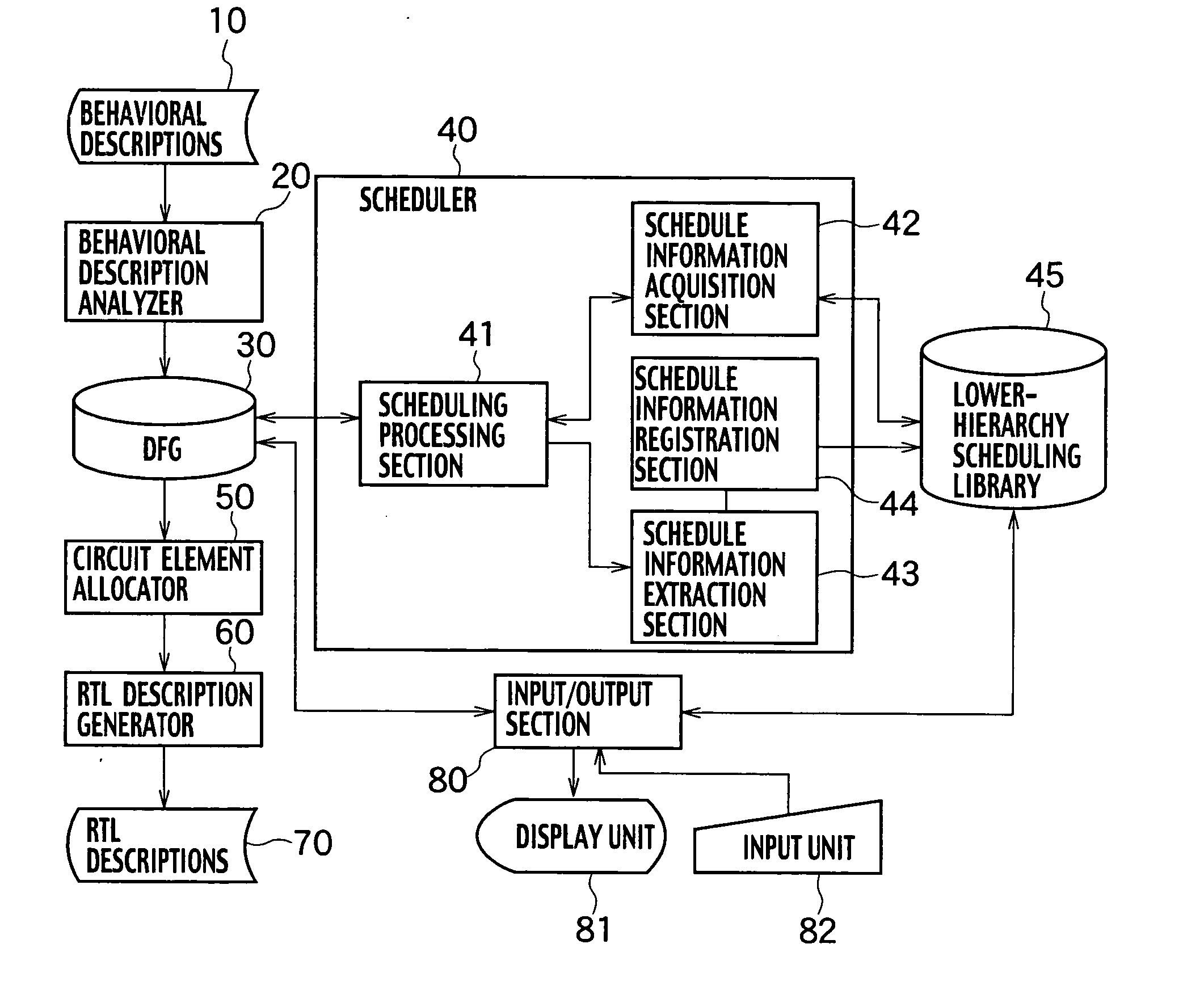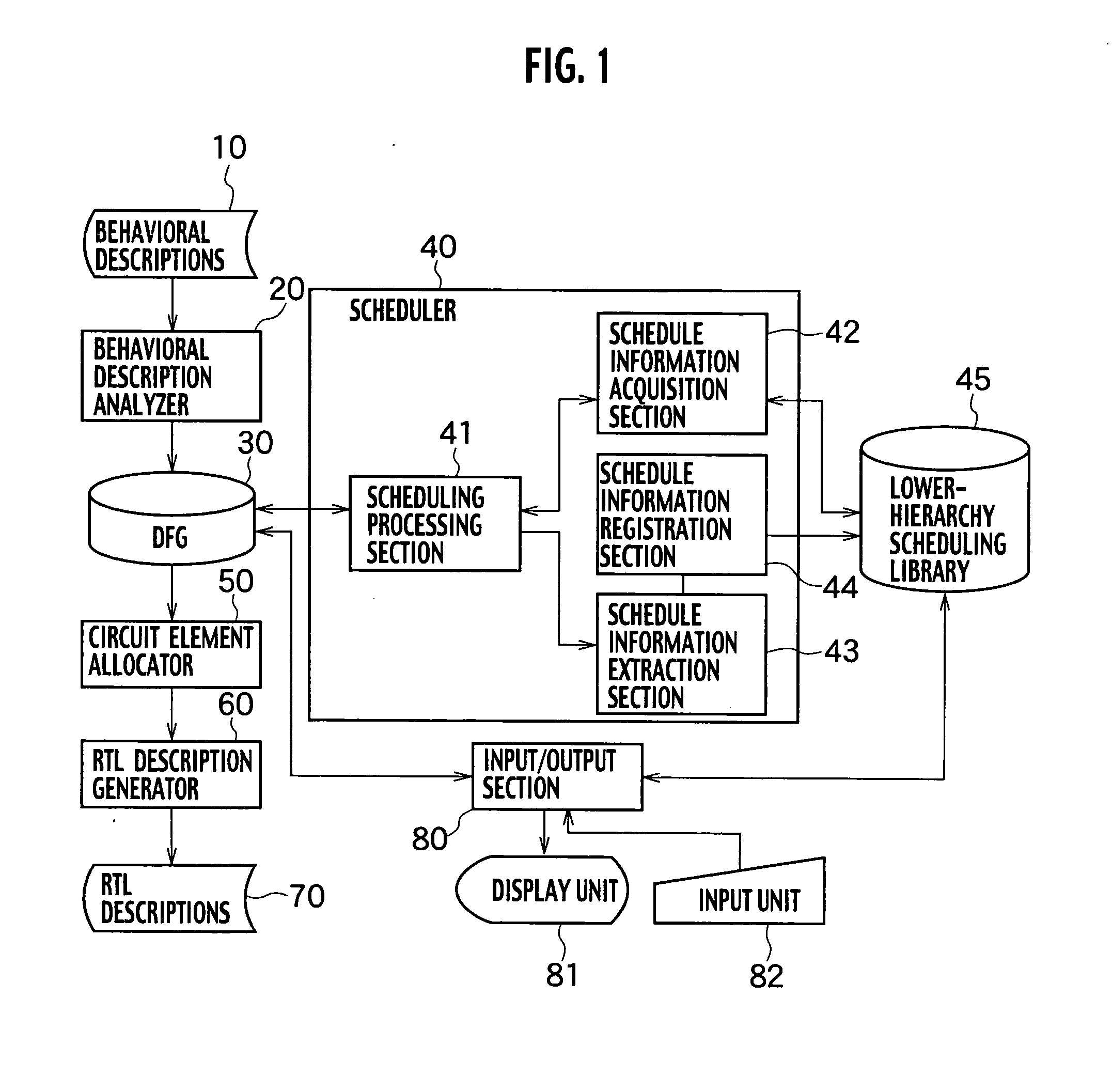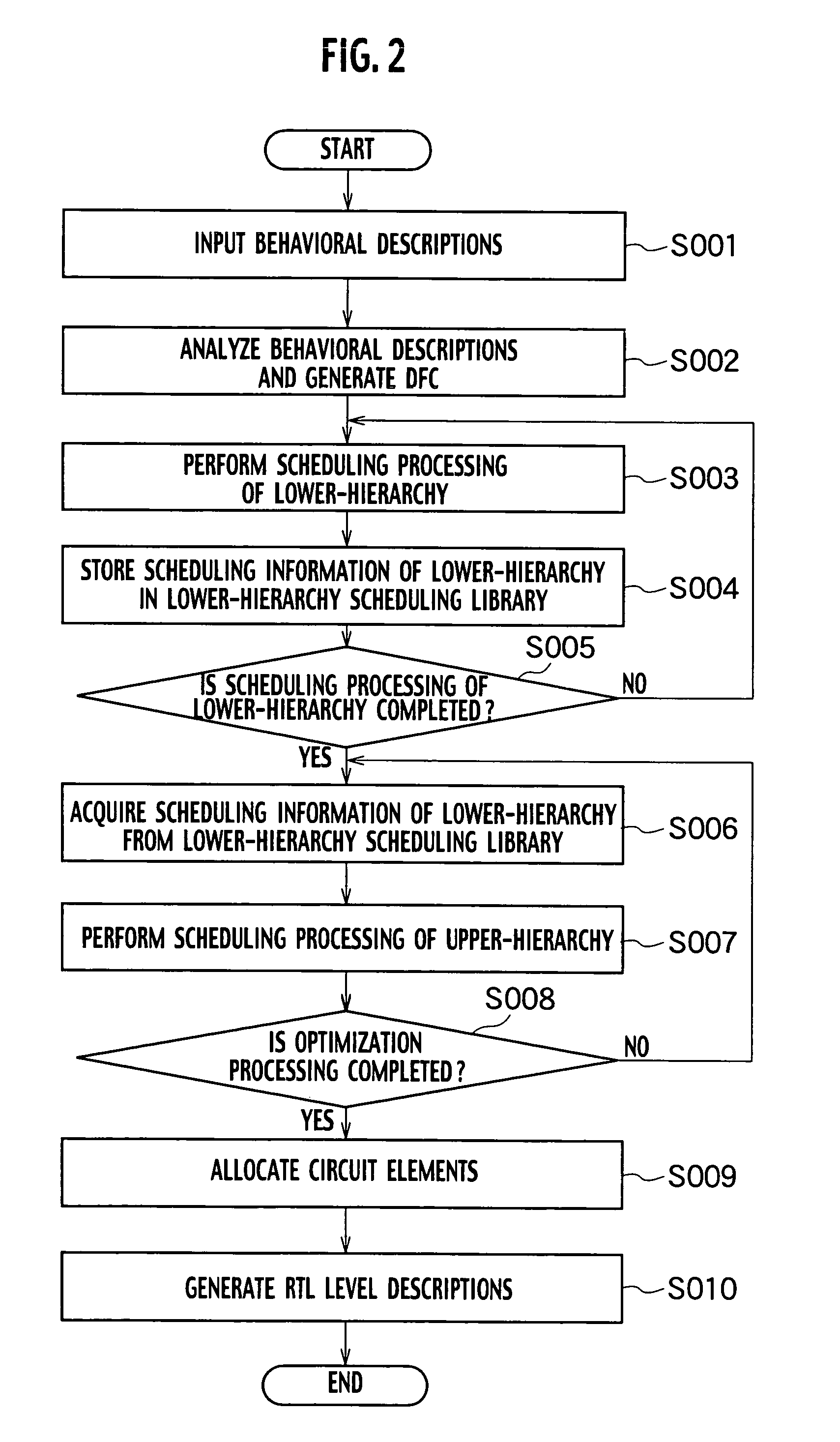Scheduler, method and program for scheduling, and apparatus for high-level synthesis
a scheduling method and high-level synthesis technology, applied in the direction of program control, cad circuit design, instruments, etc., can solve the problems of insufficient reuse of design and impossible optimal scheduling
- Summary
- Abstract
- Description
- Claims
- Application Information
AI Technical Summary
Benefits of technology
Problems solved by technology
Method used
Image
Examples
first embodiment
Scheduling Processing in First Embodiment
[0067] Next, the scheduling processing performed by the scheduler 40 will be explained in detail herein below.
[0068]FIG. 3 shows an example of behavioral descriptions to be scheduled expressed graphically by a data flow graph (DFG). In FIG. 3, each of the circular figures expresses an operation; and the operations 201, 202, 203, 205 and 206 express the typical operations, such as an addition or the like. The operation 204 is an operation calling a function “g” belonging to a lower-hierarchy. Each solid line to connect between the circular figures of the operations expresses the data dependency between the operations. For example, the solid line connecting the operation 202 and the operation 203 means that the operation 203 uses an arithmetic result of the operation 202. Therefore, the function “g” belonging to the lower-hierarchy inputs an arithmetic result of the operation 201 and an arithmetic result of the operation 203, and then outputs ...
second embodiment
Scheduling Processing in Second Embodiment
[0094] Next, the scheduling processing performed by the scheduling processing section 41 at the time of scheduling the functions belonging to the lower-hierarchy will be explained in detail herein below. In addition, FIG. 12 shows an example of a scheduling algorithm performed by the scheduling processing section 41 at the time of scheduling the functions belonging to the lower-hierarchy. FIG. 13 shows the scheduling algorithm shown in FIG. 12 described by using the programming language such like C language. Detailed explanation will be described herein below according to an example of behavioral descriptions of function “g” belonging to the lower-layer shown in FIG. 14.
[0095] First, in Step S901, the scheduling processing section 41 stores all operations vi (operations INPUT1, INPUT2, INPUT3, OP1, OP2, OP3, OUTPUT1 and OUTPUT2 shown in FIG. 14) in a Set V.
[0096] Next, in a loop processing [LOOP-1] from Step S902 to Step S909, the scheduli...
third embodiment
Scheduling Processing in Third Embodiment
[0108] Next, the scheduling processing performed by the scheduler 40 in the case where the two or more schedule information of one function belonging to the lower-hierarchy are stored in the lower-hierarchy scheduling library 45 will be explained in detail herein below.
[0109]FIG. 16 shows an example of behavioral descriptions of a function “g” belonging to the lower-hierarchy. It is assumed that operation OP1 and operation OP2 are the operations that can be executed by the same arithmetic circuit. Furthermore, it is assumed that two or more kinds of scheduling results are obtained by scheduling of the behavioral descriptions of the function “g” by the scheduling processing section 41.
[0110]FIG. 17 shows an example of first scheduling results (SCHEDULING 1). In the first scheduling process, the scheduling processing section 41 schedules in order that: all three inputs (INPUT1, INPUT2 and INPUT3) are inputted from the same input pins; operati...
PUM
 Login to View More
Login to View More Abstract
Description
Claims
Application Information
 Login to View More
Login to View More - R&D
- Intellectual Property
- Life Sciences
- Materials
- Tech Scout
- Unparalleled Data Quality
- Higher Quality Content
- 60% Fewer Hallucinations
Browse by: Latest US Patents, China's latest patents, Technical Efficacy Thesaurus, Application Domain, Technology Topic, Popular Technical Reports.
© 2025 PatSnap. All rights reserved.Legal|Privacy policy|Modern Slavery Act Transparency Statement|Sitemap|About US| Contact US: help@patsnap.com



